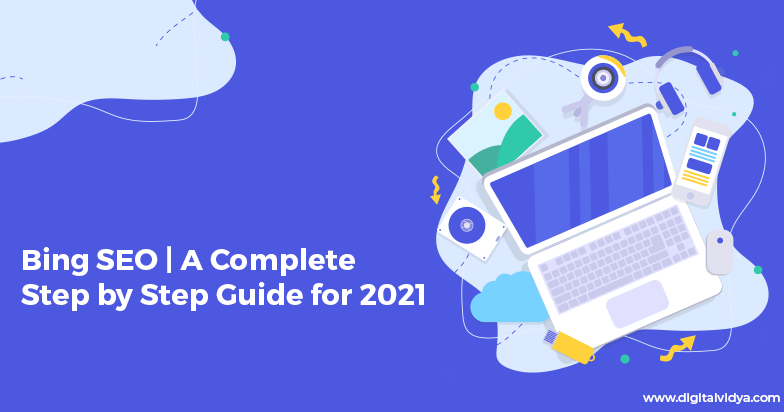Why small companies can’t scale their SEO and why agencies have the same problem? They lack the systems, processes and training. Get trained in all new 2014 processes. Develop an understanding on the same through the webinar lead by Mr. Navneet, CEO, Pagetraffic.
Q. What Google expects from its SERPS (Search Engine Results Page)?
Navneet: Google’s mission, which is to create the world’s biggest information platform and make it universally accessible so the Goal of SERPS to help searchers find sites that provide a great UX (user experience) and fulfill their information needs.
Which might cut and simplify that the strategy is to make our clients a better search result than their competitors deserving to rank topmost by considering above factors by
- Creating more authority and being a better reputable company
- Making better landing pages, specifically the primary pages.
Q. What are the SEO tactics which should be avoided?
Navneet: 5 points to consider here is first of all avoid purchasing links, do not overuse keywords within the content and link anchor text. Don’t use spam, irrelevant or meaningless comments, avoid low quality and/or thin content, avoid duplicate content, either on your site or externally and listing on generic link directories.
Q. What are SERP (Search Engine Results Page) features that Google introduced in 2013?
Navneet: Any SEO who isn’t making a SERP analysis, part of his site audit process is at best being sloppy, and at worst being negligent. In 2013, Google has introduced a maximum number of SERP features launched ever. Some of the majors are:
- 7-Results SERPS:
- 10-Results SERPS:
- Event Sitelinks SERPS:
- Google+ Brands SERPS:
- Paid Shopping (LEFT) SERPS:
- Knowledge Graph (KG) SERPS:
- Related Search Carousel SERPS:
- Local Carousel SERPS:
- Authorship Thumbnail SERPS:
- Rich Snippets and Schema Markup SERPS:
Q. Which updates Google recently launched?
Navneet: We have these below updates:
- Hummingbird update
- Google Panda, there has been 25+ updates, Panda penalizes sites which has duplicate/Thin content.
- Google Penguin, which has 4 updates, which penalizes sites for backlinks.
- Exact-Match Domain (EMD) Update the niche sites like visitmydoctor.com, taxi4hireindelhi.com
- Page Layout having 2 updates Google is severe on it
- 7-Result SERPs update
- Link Warnings- more than a million were issued this one which came into the picture
- Knowledge Graph which I’m discussing more in this webinar
- Venice update
Besides that, there are 390 other monthly updates in the current market.
Q. How did you elaborate yesterday’s Traditional SEO to today’s Inbound Marketing?
Navneet: Traditional SEO was more about technical SEO and less content marketing, but now things has changed. Today we have more content marketing, but less technical SEO and top of that cherry we have social media also.
Q. So is technical SEO less important now?
Navneet: No, previously it had been like SEO means technical related thing, it’s not that but overall through our experience we came to know dealing with so many hundreds of clients, we’ve seen Technical SEO is very much important and fixing those technical issues can really help to improve ranking dramatically.
Q. What is technical audit and how to do it?
Navneet: To check the technical errors through your website is technical audit where we check above terms which has been done through using some tools.
We have broken links check, Indexabilty of the site, Usability, Source code, GWT (Google Web-master Tool) errors check, Schema i.e. html tag check and speed check.
Q. Besides the traditional tools which are the Current tools for broken links that can be used and why?
Navneet: For broken link check, we had been used Xenu, which is old, Screaming Frog which is compatible with Windows, Mac and Ubuntu through which you can check how many No response, success, redirection, client/crawl and server errors are there and can export the data, one more vary important tool is GWT which is a free tool to gather data which it shows is also important to analyze. But now in 2014 we are using this interesting tool named Sitecondor comparatively to screaming frog here we can sign up and use for at least 2K links rather than 500 links more to elaborate Sitecondor stores data in the cloud which is free from our net bandwidth and can share the data across networks and more detailed and structured data we get through this tool. Another one is SEO Crawler to understand your website properly.
Q. Why Usability is important and how to improve it?
Navneet: Usability does play the major role in SEO. Even if you’ve lots of visibility having a good rank but you’re not converting it then Usability becomes a question. It should have clear call to action, having proper answer to any uncertainty coming from any user, does the website navigation is friendly, due to user’s short span of time we should avoid long paragraphs in content, you can use image to make the content more rich, having meaningful and friendly URLs benefits of it makes the search engine friendly and user can remember, get back and share it, having testimonials and reviews about your product, simplesignup and short contact forms, the site should be mobile friendly due to more than 30% traffic comes from it.
Q. Which tool do you use for usability of your site?
Navneet: Power mapper is a good tool to check what your website lacks in order to get it error free and to get more conversions.
Q. How to optimize the source code of a website effectively for technical audit?
Navneet: Basically, it’s the effective correction in the case if your website contain duplicate URLs or not, say Canonicalization check of your website i.e. folder structure, non-folder structures, same URLs etc., then remove meta keywords so that source code will decrease in size, disable images using web developer tools else using seo-browser.com website.
Q. How to do content audit and please review about its importance?
Navneet: It involves first of all duplicate content check then thin content check. It’s the negative content in your website and Google panda can penalize you for it.
Q. Which tools do you prefer for checking duplicate content?
Navneet: You can check it simply by using Google search engine, but not more than 7-10 words or using paid tool Copyscape, which use external website to check internal duplicacy using Siteliner website.
Q. What is thin content?
Navneet: When you have a Low Unique Ratio i.e. same header and footer, same links hence the uniqueness of that content become less, a web page which has repetitive content on category pages and footer, having bounce rate between 95 and 99.99, having an average time on page between 0.1 and 5 seconds said to be a thin content and content with less word count.
Q. How to fix thin content issue?
Navneet: These errors you can be checked via Google analytics while content with less word count is a thin content which can be checked via scream frog. I’ll say it should have at least 100-150 words of high unique content, you can check the URL parameter handling features via GWT tool where you can block the pagination, sorting URLs indexed by Google,s but I’ll say it should be done by an expert only, check pagination i.e. page 1,2 etc. contents, next you can check non-indexed URLs via GWT tool.
Q. What is Link audit and how to fix it?
Navneet: It’s a backlink analysis of your website where the process involves review of sites that are currently linking to yours and judging them based on quality and relevance to your business. An essential process if a site has suffered a manual spam penalty for unnatural links and it is useful for monitoring competitor backlinks and identifying strong links for your own site. It can be fixed by GWT, AHref, Majestic SEO, OSE tools
Q. How to do Keyword analysis?
Navneet: Keyword analysis is a very important process. If you see the keyword, search for the websites if you get big websites likes Wikipedia, TOI in topmost then it is very hard to get a rank so replace it with a simple one. Put a question list like what is the volume of traffic for the keyword combination? Have other websites optimized for those keywords? Would it be hard to get a high ranking? Who sits in the No. 1 spot for those keywords? What keywords my competition targeting? For this you can use the SEMrush.com website. Then see the motive in the searcher’s so what do the keywords say about the searcher’s mindset? i.e. surfers, researchers or buyersH
For this Google Keyword Planner tool is a good option.
Q. How to plan for the right keywords?
Navneet: You can first of all put your Competitor’s site in the Google Keyword Planner, then can put Pinterest search results, Reedit topics, industry conference topic pages in the Keyword Planner it gives you intuitive, idea about the content keywords.
Q. What advice will you give the readers about right keywords?
Navneet: Firstly optimize each page for a different keyword combination, don’t choose single keywords for this 3-5 word combinations are best, don’t choose generic keywords be specific, don’t choose hotly-contested keywords like Mobile phones, use geographic qualifiers i.e. India, put yourself in the buyer’s shoes their buying choice, choose keywords that align with a mindset of a buyer.
Q. Any advice for having a great content?
Navneet: Of course a great content gives your site better visibility so check if it has a great content or its brochure-ware, check if your site ‘do’ anything else that will bring visitors back time and again, add content that people want to read and will pass on ex. Top 10 tips, ‘how to’ guides, free white papers, etc., text should be in short sentences, compact paragraphs, be well punctuated and contain headings to break up the text cause time-poor people don’t read, they just scan, pages should not scroll and scroll further, it should have one page per theme optimize it based on a theme, one more important thing is text should be written from a WIIFM (What’s in it for me?) perspective- no fluff, just tell the customer what they want to hear.
Q. And what advice will you give to gain good visibility of the website or blog?
Navneet: With a good content also keep adding content regularly if your site remains static, then it’ll lose its prominence in the search engines and visitors won’t want to come back.
Q. Any ideas for developing new content for the website?
Navneet: Mostly people struggle with ideas for what to write so for them this can be helpful. You would have a new product you could add, company activities, special offers, achievements, new staff profiles, can add case studies about your products or services, testimonials from customers, ‘how to’ guides the simplest way to do it, general advice about products and services, observations about the market, faqs these are some of the contents you can add. Believe me, you don’t need to be a content writer to produce these kind of contents regularly.
Q. What SEO should check beforehand on the website?
Navneet: You should have good site structure, should have title tags, descriptions, page copy that is focused & contextually relevant and build natural links which is communicated above.
Q. How do you measure success of SEO? Any solution?
Navneet: We see sometimes the lot of keywords, but if you click on Google analytics you’ll see a lot of your results have gone “not provided” so “Data” and “not provided” keywords will decide here. It’s the “Data” and not the “not provided”, we believe by this year end “not provided” will going to go 100% from 85% now. Mostly people whine about Keywords but I’m telling you there’ll be needed no more keyword data, attribution modelling becomes largely useless.
Solution: check these data sources, Total organic visits to top landing pages, total search visits minus brand clicks from WMT data, estimated visits per keyword via rankings, CTR & search volumes, and click share for product categories.
Q. What is important for web page optimization?
Navneet: It’s important to drive traffic and check does the page generate conversations or not. Firstly, it’s important to understand, analyze traffic is primary and keywords are secondary. You are optimizing your website not for Keywords, you’re optimizing it for conversion henceforth these should be taken into consideration like to think landing pages for organic, which ones are they, do they lead to conversions or not, what kind of traffic is coming to the landing pages so in short you need to work backward- go to the landing pages see what kind of a bounce rate I’ve and can I decrease the rate so see what kind of content you have. It’ll be a better strategy to optimize rather than keywords.
Q. How to identify Key Landing pages?
Navneet: With the help of Google analytics, go to Landing pages and filter with Organic search –type particular keyword and it’ll show you visits, Goal conversion rate, per visit goal value in each column for different keywords.
Q. How to find Dominant Keywords for a content?
Navneet: After identifying Key Landing pages, with the help of GWM tool builds likely phrases, e.g. Lasik, savings, cost is the words of it I’ll build phrases like Cost of Lasik, Savings on Lasik etc. By using GWM tool by typing keyword “cost” I get so many phrases were “surgery” is dominant, then go to the www.wordle.net or tagcrowd.com and analyze between three keywords that we have “Lasik”, “cost”, “surgery” just import it and analyze. Now you can repeat these keywords for all landing pages to specific keyword phrases to top 10 pages, then compare by engagement rate and Conversion rate and identify the best landing page for keywords then build the content around it.
Q. Why Link building is important with content?
Navneet: Now forget keywords as interest don’t just work building links for keywords or for any other product that’s not viable so build links to your content. It’ll help out.
Q. How can one build links to content?
Navneet: By engaging content with social, PR, real content infused with knowledge of SEO best practices. Now what content type you ask, it’s related to your business, you can pick eBooks, blogs, Images and infographics, audio or video, events, email news. Thus, produce the content.
Q. How one can build and promote the content through links?
Navneet: Once you’ve produced content question is what kind of content so build content with high search link intent rather than just which has a high conversion because you are building content to get more links. Then when you do Link Anchor Text Diversification avoid exact match for that you can use naked URLs such as www.xyz.com, Generic anchors, i.e. “click here”, “this website”, Use brand Keywords such as PageTraffic, pagetraffic India, page traffic or page traffic SEO company. You need to learn the art of storytelling so that you can connect with the clients, customers, employees, products and services. Promote the content using Social graphs or peer influence, Backlinks (Quality, Relevance, Quantity), build credibility from trusted sources via PR to get high online engagement.
Q. What is Knowledge graph and how does it affect the websites?
Navneet: Knowledge Graph (KG) takes data from Wikipedia, Freebase is thus collating and organizing your information. The KG’s primary source of textual, descriptive data is Wikipedia and Freebase. I would say try through Freebase (owned by Google) which shows co-relation between your data that you can also edit also which connects you to different products of Google i.e. Google Plus and Google will feature your latest G+ postings for free. It does affect the site greatly, in a study of 8 sites, the average CTR for sites in the top 5 positions of Google dropped from 22% to 12% through Knowledge Graph but when used correctly, it showed an overall increase in traffic for sites, even when the sites lost traffic on individual searches.
Q. What is Authorrank and how can I build it, which will help me achieve better traffic?
Navneet: We can do it by Google Authorship, we know that great content comes from great authors, so it could help by highlighting authors and rank search results Along with highlighting author, fusing web of people with the web of documents and creating a more savvy view of internet influence is done by Google Authorship rank.
Author rank depends on certain factors, i.e. your average PR, relative authority and sharing on social networking sites, +1s/shares per post, authority of publishing sites, comments per post, posting frequency, No. of circles you’ve, outside authority indicators etc. Once you do this after done with your write-up then try to improve Authorrank by
- Checking your Google+ feed and interact.
- Updating your blog regularly.
- Building visibility and/or relationship with the authors and editors.
- Looking interesting people and circle them
Q. How to optimize off your Facebook page for Google?
Navneet: Just go to http://pt.gy/seofbpage to learn how to optimize and maximize value of your Facebook with our how to guide in detail.
Q. What do you see in today’s SEO specialist?
Navneet: I’ll just say instead of asking how do I get rank #1, simply think about what is the best strategy to drive traffic to my site and convert it further that will be best for any SEO’s.
Interested in benefiting through similar Digital Marketing Webinars live? Sign up for our upcoming Wednesday Webinar! You can also enjoy the recordings of our other Past Webinars.


















